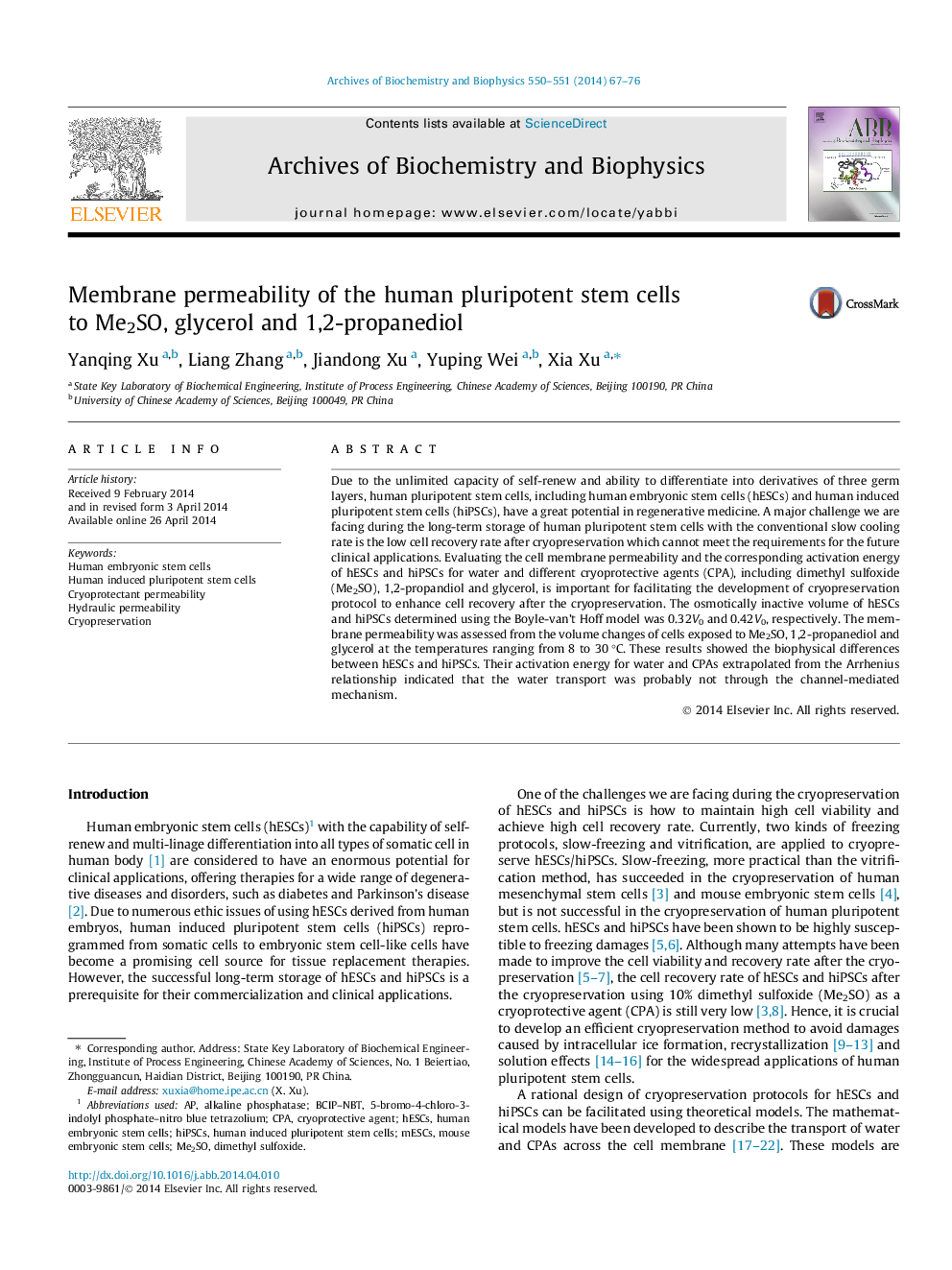| Article ID | Journal | Published Year | Pages | File Type |
|---|---|---|---|---|
| 1925160 | Archives of Biochemistry and Biophysics | 2014 | 10 Pages |
•The cell diameter and Vb between hESCs and hiPSCs are different.•The cell membrane permeability properties between hESCs and hiPSCs are different.•The cells show differential responses at different cooling rates.
Due to the unlimited capacity of self-renew and ability to differentiate into derivatives of three germ layers, human pluripotent stem cells, including human embryonic stem cells (hESCs) and human induced pluripotent stem cells (hiPSCs), have a great potential in regenerative medicine. A major challenge we are facing during the long-term storage of human pluripotent stem cells with the conventional slow cooling rate is the low cell recovery rate after cryopreservation which cannot meet the requirements for the future clinical applications. Evaluating the cell membrane permeability and the corresponding activation energy of hESCs and hiPSCs for water and different cryoprotective agents (CPA), including dimethyl sulfoxide (Me2SO), 1,2-propandiol and glycerol, is important for facilitating the development of cryopreservation protocol to enhance cell recovery after the cryopreservation. The osmotically inactive volume of hESCs and hiPSCs determined using the Boyle-van’t Hoff model was 0.32V0 and 0.42V0, respectively. The membrane permeability was assessed from the volume changes of cells exposed to Me2SO, 1,2-propanediol and glycerol at the temperatures ranging from 8 to 30 °C. These results showed the biophysical differences between hESCs and hiPSCs. Their activation energy for water and CPAs extrapolated from the Arrhenius relationship indicated that the water transport was probably not through the channel-mediated mechanism.
